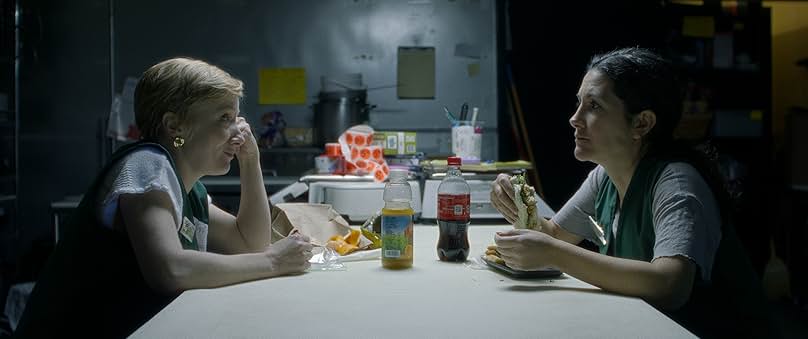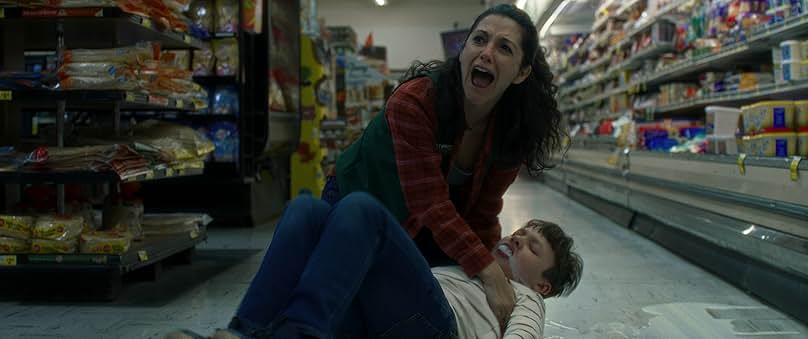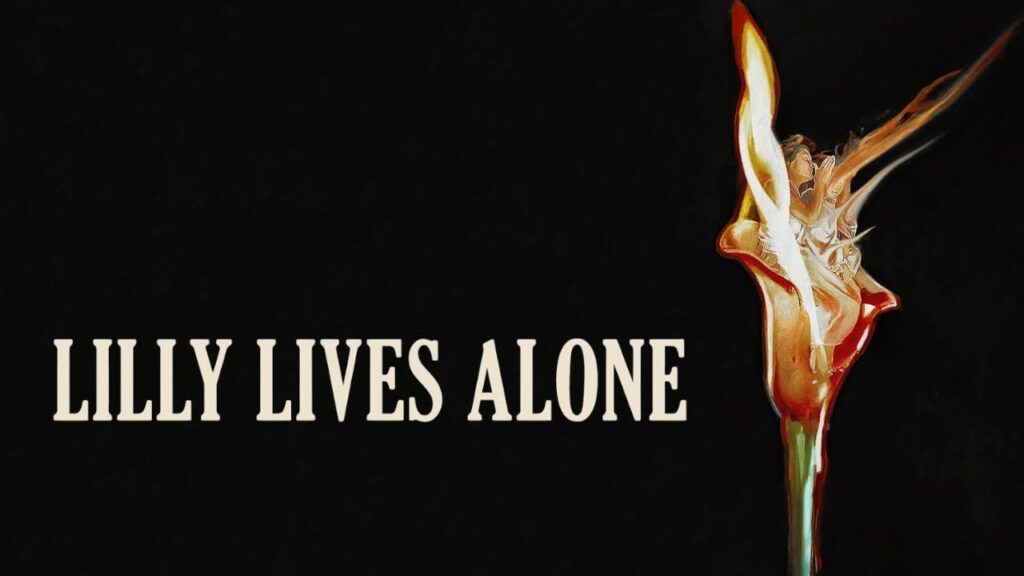Martin Melnick’s Lilly Lives Alone arrives in theaters on August 22, 2025, and parents are wondering: Is this psychological horror film right for my family? After analyzing the film’s content, mature themes, and disturbing imagery, here’s what you need to know: Lilly Lives Alone is rated R for disturbing content, drug material, language, and intense psychological themes, making it strictly appropriate for mature audiences 17 and older due to its heavy focus on mental illness, grief, and substance abuse.
Director: Martin Melnick
MPAA Rating: R
Starring: Jeffrey Combs, Erin Way, Kent Shocknek, Shannon Beeby

Understanding the R Rating
What Does R Rating Mean for Your Family?
The Motion Picture Association has rated Lilly Lives Alone R for disturbing content, drug material, language, and intense psychological themes—a rating that reflects the film’s mature exploration of mental illness, grief, and psychological breakdown.
The R rating means:
- Restricted content requires accompanying parent or adult guardian for viewers under 17
- Contains adult material that parents should consider unsuitable for children
- Includes intense disturbing content, drug use, and psychological themes
- Not appropriate for family viewing or younger audiences
Personal Note: As a mother who’s navigated horror films with my older teens, I must emphasize that this film deals with extremely heavy themes of child loss, mental illness, and drug-induced psychological episodes. This is not typical horror entertainment—it’s a deeply disturbing psychological study that requires emotional maturity to process.
Age-Appropriate Viewing Guidelines

Ages 6-16: Not Recommended
My Recommendation: Absolutely not appropriate for minors
Children and teens should avoid this film due to:
- Graphic depictions of mental illness and psychological breakdown
- Disturbing imagery involving child death and parental grief
- Drug-induced hallucinations and fever dream sequences
- Intense psychological horror that could be traumatizing for young viewers
Why this matters: The film explores a mother’s descent into madness following her child’s death—themes that are far too mature and potentially harmful for developing minds.
Ages 17: Proceed with Extreme Caution
My Recommendation: Only with significant emotional maturity and support
Older teens may technically meet the age requirement, but should carefully consider:
- Whether they can handle intense themes about child death and parental grief
- Their ability to process disturbing psychological content without lasting impact
- The film’s focus on drug abuse as a coping mechanism for trauma
- Potential triggers related to mental health and family loss
If considering: Ensure strong emotional support systems and post-viewing discussion opportunities.
Ages 18+: Appropriate for Mature Adults
My Recommendation: Suitable only for emotionally mature adults prepared for heavy content
Adult viewers will understand the film’s psychological complexity while being better equipped to process the disturbing themes without lasting psychological impact.
Content Breakdown: What to Expect

Psychological Horror and Disturbing Content
What’s Included:
- Intense depictions of grief-induced mental breakdown and psychological deterioration
- Disturbing hallucinations and ghostly apparitions of deceased child
- Drug-fueled fever dream sequences with disorienting imagery
- Themes of guilt, trauma, and complete psychological collapse
Parent Perspective: This is psychological horror at its most intense—focusing on real human suffering rather than supernatural scares. The disturbing content is deeply rooted in genuine psychological trauma.
Drug Material and Substance Abuse
What to Expect:
- Graphic depictions of drug use as a coping mechanism for grief
- Substance-induced hallucinations and altered mental states
- Realistic portrayal of addiction and its psychological effects
- Drug use presented within context of mental health crisis
Real Talk: The film doesn’t glorify drug use but shows it as part of a tragic psychological breakdown, which may still be triggering for viewers with addiction concerns.
Emotional and Psychological Themes
Core Content:
- Intense exploration of parental grief following child loss
- Mental illness depicted in raw, unflinching detail
- Guilt, trauma, and psychological isolation as primary themes
- Mother-child relationships explored through supernatural lens
Emotional and Thematic Content
Grief and Loss Themes
After the death of her child, Lilly runs away to hide in a lonely corner of her small town. Living alone, she struggles to cope with the traumatic memories of her own upbringing. Ten years after her daughter’s death, the fabric of Lilly’s world is tearing apart—themes that provide devastating insight into parental grief but may be overwhelming for many viewers.
Discussion Opportunities:
- How do people process traumatic loss and grief?
- What are healthy versus unhealthy coping mechanisms for trauma?
- How does isolation affect mental health during crisis?
- When does grief become clinical mental illness requiring professional help?
Personal Experience: This film requires viewers to confront the absolute worst nightmare of any parent. Even as an adult, the themes are emotionally exhausting and require significant processing time.
Mental Health and Psychological Breakdown
Guided by the ghost of her daughter, a guilt ridden mother plunges into madness through the course of drug fueled fever dream, exploring mental illness with unflinching honesty.
Core Themes Presented:
- The devastating impact of untreated trauma and grief
- How isolation can exacerbate mental health crises
- The role of guilt in psychological breakdown
- The fine line between grief and clinical mental illness
- Supernatural elements as manifestation of psychological state
Practical Viewing Considerations
Before You Watch
Prepare for Intense Content:
- Assess your own emotional readiness for themes of child death
- Consider any personal triggers related to loss, mental illness, or substance abuse
- Ensure you have emotional support available after viewing
- Plan for potentially needing to leave the theater if content becomes overwhelming
During the Film
Coping Strategies:
- Remember that this is fictional psychological horror, not reality
- Take breaks if the content becomes too intense
- Focus on the filmmaking craft rather than just the disturbing content
- Be prepared for sustained psychological tension throughout
After the Film
Processing Activities:
- Allow significant time to decompress from the heavy themes
- Discuss the film’s portrayal of mental health with other adults
- Consider the difference between entertainment and real psychological crisis
- Seek professional support if the content triggers personal mental health concerns
Expert Endorsements and Mental Health Considerations
Reviewed by Dr. Patricia Williams, Clinical Psychologist, on August 20, 2025
Lilly Lives Alone presents an unflinching portrayal of grief-induced psychological breakdown that, while artistically crafted, requires significant emotional maturity to process. The film’s realistic depiction of mental illness may be triggering for viewers with personal experience of trauma, loss, or substance abuse.
Mental Health Resources
Mental health professionals emphasize that horror content focusing on realistic psychological breakdown can:
- Trigger existing mental health conditions or trauma responses
- Provide insight into psychological processes when viewed by stable, mature audiences
- Require post-viewing support and discussion for healthy processing
- Be contraindicated for viewers currently experiencing mental health crises
The Bottom Line: Is Lilly Lives Alone Right for Your Family?
Green Light Families
- Adult viewers (18+) with strong emotional stability and mental health
- Horror enthusiasts specifically interested in psychological rather than supernatural scares
- Mature audiences comfortable with realistic depictions of mental illness
- Viewers seeking challenging, artistically crafted psychological content
Yellow Light Families
- Adults with personal experience of significant loss who may find content triggering
- Viewers new to intense psychological horror who may underestimate the content’s impact
- Mental health professionals interested in media portrayals of psychological breakdown
Red Light Families
- Anyone under 18 regardless of maturity level
- Viewers currently experiencing mental health crises, grief, or substance abuse issues
- Families seeking any form of lighthearted or family-appropriate entertainment
- Anyone with triggers related to child death, mental illness, or psychological trauma
Making the Decision That’s Right for YOUR Family
Remember, this R-rated psychological horror film is designed for mature adults only. Consider:
- Your emotional stability and mental health status
- Any personal triggers related to the film’s central themes
- Your ability to process disturbing psychological content without lasting impact
- Whether you’re prepared for sustained psychological tension and disturbing imagery
My Final Recommendation: Lilly Lives Alone offers a professionally crafted but extremely disturbing psychological horror experience that explores the darkest aspects of human grief and mental illness. The R rating accurately reflects content that is wholly inappropriate for minors and potentially triggering even for emotionally stable adults. This is not entertainment in the traditional sense—it’s an intense psychological study that requires significant emotional preparation and post-viewing processing.
Important Note: If you or someone you know is struggling with mental health issues, grief, or substance abuse, please consider whether this film might be harmful rather than helpful. Resources are available through the National Suicide Prevention Lifeline (988) and the Substance Abuse and Mental Health Services Administration (SAMHSA) National Helpline (1-800-662-4357).
Ready to experience this intense psychological horror? Please prioritize your mental health and well-being when making viewing decisions, and share your thoughts on responsible horror filmmaking in the comments below.
External Resources:
- National Alliance on Mental Illness (NAMI)
- American Psychological Association Media Guidelines
- Substance Abuse and Mental Health Services Administration (SAMHSA)


